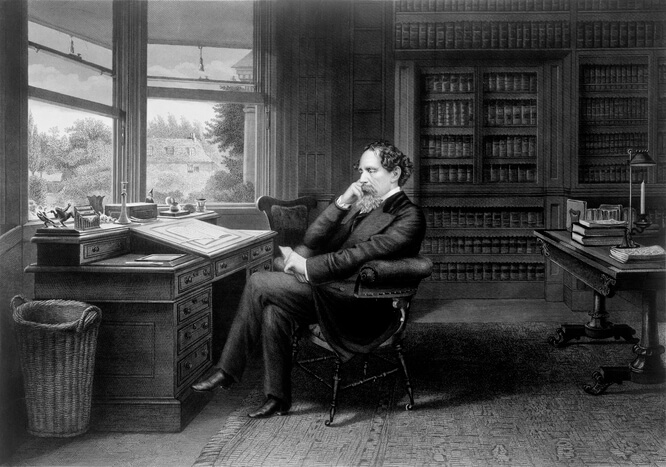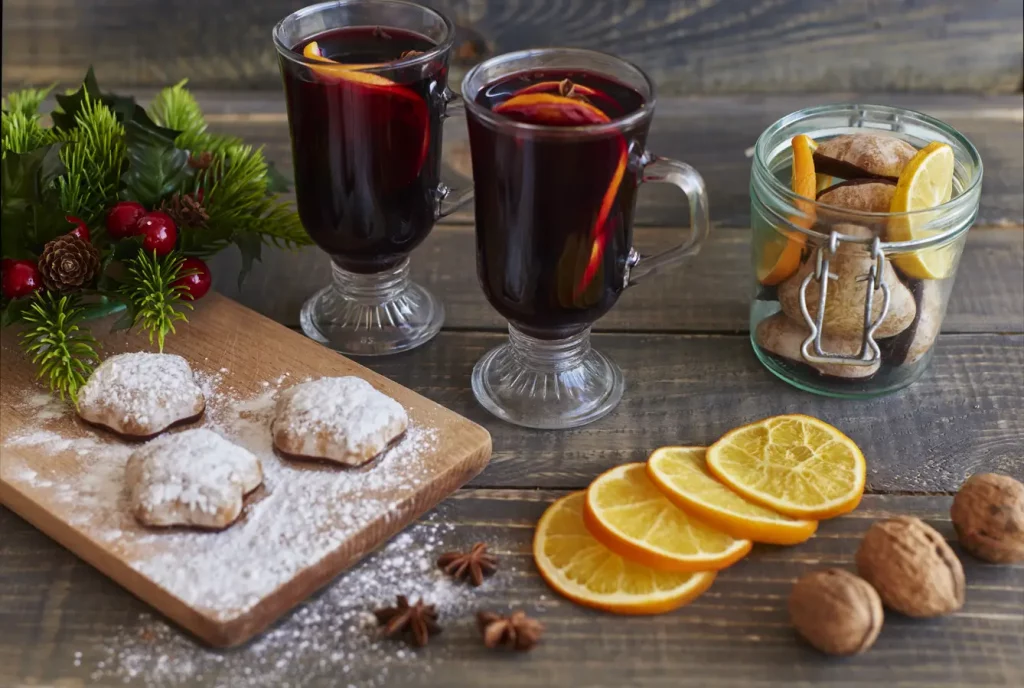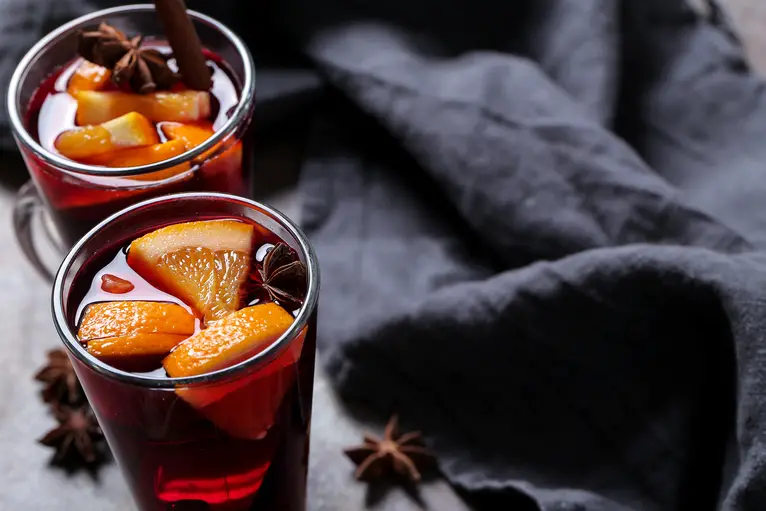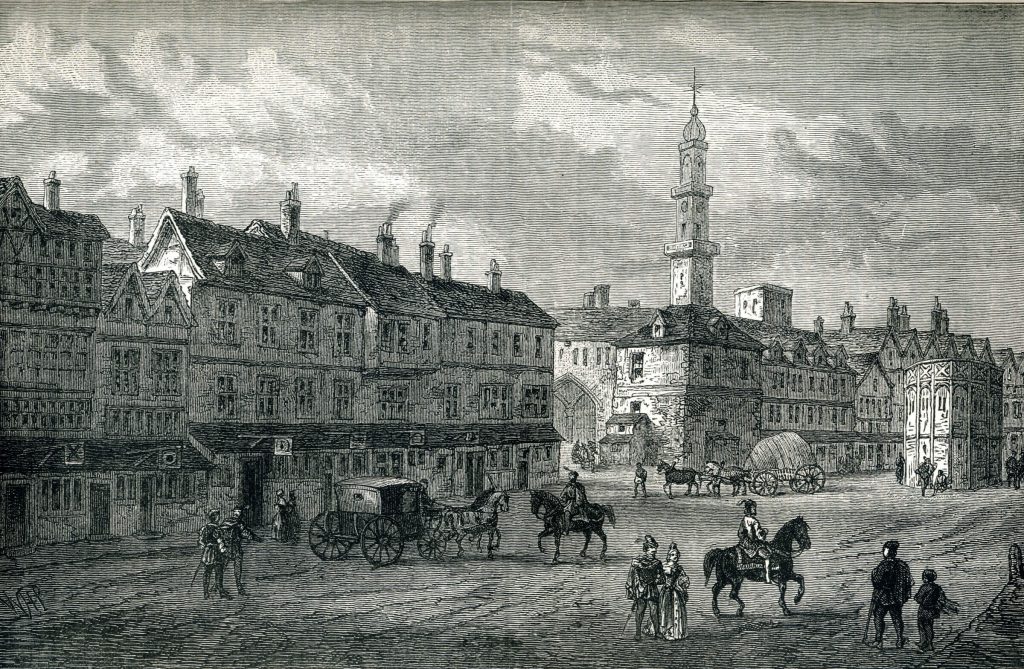History of Mulled Wine

History of Mulled Wine
Mulled Wine - History: Table of Contents
HISTORY OF MULLED WINE – OVERVIEW
Mulled wine is a festive drink that many people associate with Christmas. It is usually made with red wine, spices, sugar, and sometimes fruits or spirits, and served hot or warm. But where did this tradition come from? How did it become popular in Britain and other parts of the world? And what does it have to do with Charles Dickens and the Victorian era? We will explore the history of mulled wine, from its ancient origins to its modern variations, and show how it reflects the social and cultural changes of different times and places.
ORIGINS
The origins of mulled wine can be traced back to the ancient Romans, who heated wine to keep themselves warm in the cold winter. They also added spices and herbs to improve the taste and health benefits of the wine. As the Romans expanded their empire across Europe, they brought their wine and recipes with them. The word “mull” comes from the Old English word “myl”, meaning “to sweeten”. The Romans called the mulled wine “Conditum Paradoxum”.
THE MIDDLE AGES
In the Middle Ages, mulled wine was a common drink in Europe especially in France, Spain and England, among the upper classes who could afford expensive spices such as cinnamon, cloves, nutmeg, and ginger. These spices were believed to have medicinal properties and to prevent diseases. People believed that the spices would promote health and prevent sickness. They also used herbs and flowers as natural sweeteners to improve the taste of poor quality wines.
The word “mull” was first used in 1618 to describe the process of heating and spicing wine. Mulled wine was also used for religious ceremonies and celebrations, such as Christmas and New Year’s Eve. One of the earliest recipes for mulled wine can be found in The Forme of Cury, a medieval English cookbook from 1390.
16TH TO 17TH CENTURY
In the 16th to the 18th centuries, mulled wine became more diverse and creative, as different regions and countries developed their own variations. For example, in Sweden, a drink called glögg was invented, which included vodka, raisins, almonds, and cardamom. Mulled wine was a favourite drink of the Swedish monarchy and nobility. They developed various recipes with different spices, honey, sugar and sometimes milk or brandy. They called their spiced wine “glögg”, a word that first appeared in 1609.
In Germany, a drink called glühwein was popularized, which added citrus fruits such as oranges and lemons to the wine. In France, a drink called vin chaud was enjoyed, which used honey instead of sugar.
19TH CENTURY – Glögg
Glögg became associated with Christmas in Sweden and was sold in bottles with images of Santa Claus. The drink spread to other parts of Europe and the world, where it was adapted to local tastes and ingredients. Mulled wine became a festive tradition in many countries.

CHARLES DICKENS
However, it was not until the 19th century that mulled wine became associated with Christmas in Britain. This was largely due to the influence of Charles Dickens, the famous novelist who wrote A Christmas Carol in 1843. This novella tells the story of Ebenezer Scrooge, a miserly old man who is visited by four ghosts on Christmas Eve: his former business partner Jacob Marley, and the spirits of Christmas Past, Present, and Yet to Come. Through these visits, Scrooge learns to appreciate the true meaning of Christmas and becomes a kinder and happier person.
One of the scenes that Dickens describes in A Christmas Carol is when Scrooge’s nephew Fred invites him to join his family for Christmas dinner. Fred says: “A merry Christmas and a happy New Year to you; and I say God bless you!” He then offers Scrooge some mulled wine: “There’s such a goose… there’s such a turkey… there’s such a pudding… there’s such a mince-pie… there’s such a bowl of punch…”
Dickens was very fond of mulled wine himself, and he mentioned it in several of his other works, such as The Pickwick Papers, The Chimes, The Cricket on the Hearth, and The Mystery of Edwin Drood. He also wrote about another variation of mulled wine called smoking bishop, which used port wine instead of red wine, and added roasted oranges to give it a smoky flavour. Smoking bishop was named after the colour of a bishop’s robe in the Anglican Church.
VICTORIAN ERA
Dickens’ writings captured the spirit of the Victorian era (1837-1901), when Britain was undergoing rapid industrialization, urbanisation, social reform, and imperial expansion. It was also a time when many traditions and customs related to Christmas were revived or invented, such as carols, cards, trees, crackers and Santa Claus.
Mulled wine was one of these traditions that became popular again among the British people, who enjoyed it at home or at public events such as markets, fairs or parties . Mulled wine also symbolized the values of generosity , hospitality , and charity that Dickens promoted in his stories.

HISTORY OF MULLED WINE WITH OTHER SPICES
Some other spices that have been used in mulled wine are:
Allspice: Allspice is a spice made from the dried berries of a tropical tree. It has a warm, sweet, and aromatic flavour that resembles a combination of cinnamon, nutmeg, and cloves. Allspice can add some depth and complexity to your mulled wine.
Cardamom: Cardamom is a spice that comes from the seeds of a plant in the ginger family. It has a fragrant, citrusy, and slightly minty flavour that can brighten up your mulled wine. Cardamom is often used in Scandinavian and Indian versions of mulled wine.
Ginger: Ginger is a spice that comes from the root of a flowering plant. It has a spicy, zesty, and slightly sweet flavour that can add some heat and freshness to your mulled wine. Ginger can also help with digestion and nausea.
Vanilla: Vanilla is a spice that comes from the pods of an orchid plant. It has a rich, sweet, and floral flavour that can enhance the sweetness and aroma of your mulled wine. Vanilla can also pair well with other spices like cinnamon and nutmeg.
You can experiment with different combinations and proportions of these spices to find your favourite mulled wine recipe. You can also add some fresh or dried fruits like cranberries, apples, or figs to give your mulled wine some extra flavour and texture.
CURRENT DAY
Today, mulled wine is still a favourite drink during the festive season in many parts of the world. It has also evolved to suit different tastes and preferences. For example, some people use white wine instead of red wine, or add other ingredients such as apple juice, cranberry juice, brandy, rum or whiskey. Some people use ready-made mixes to make it easier to make mulled wine, like for example: Smoked Bishop.
Mulled wine is more than just a drink. It is a part of history and culture that reflects the changes and continuities of different times and places. It is also a way of celebrating and sharing the joy and warmth of Christmas with family and friends. As Dickens wrote in A Christmas Carol : “It is a fair, even-handed, noble adjustment of things, that while there is infection in disease and sorrow, there is nothing in the world so irresistibly contagious as laughter and good-humour.”
SMOKING BISHOP RECIPE
Mulled wine is not just for Christmas, it is a drink for all seasons. Whenever you feel the chill in the air, or the need for some cheer, gather your loved ones and make some mulled wine together. It will warm your body and soul, and fill your home with a sweet and spicy aroma.
Why settle for the usual beer, wine, and spirits when the weather is cold? Try something different and cosy up with a nice warm mug of mulled wine. It’s a delicious drink that will make you feel festive and relaxed. You’ll love the rich flavour and aroma of red wine infused with spices and fruits. Mulled wine is the perfect way to enjoy the winter season with your friends and family.
References:
Info Box
Other common search terms for the history of mulled wine: history of mulled wine, mulled wine history and easy, wine history and easy recipe, mulled wine recipe & best mulled wine

Feel Free to Share!